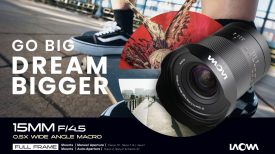Atomos announced the Ninja Phone back in April and it is now available, along with the app. It was slightly strange that you could purchase the Ninja Phone in early July, but the app wasn’t available.
The Ninja phone is a 10-bit video co-processor for smartphones and tablets that lets you record from professional HDMI cameras. Essentially it is sort of like a Ninja for your phone.
Atomos has also released a walkthrough video showing how it works and how to set it up.
The Ninja Phone is designed for iPhone 15 Pro and iPhone 15 Pro Max and it allows you to use it as a professional monitor-recorder that can capture 10-bit ProRes or H.265 from any professional camera with an HDMI output.
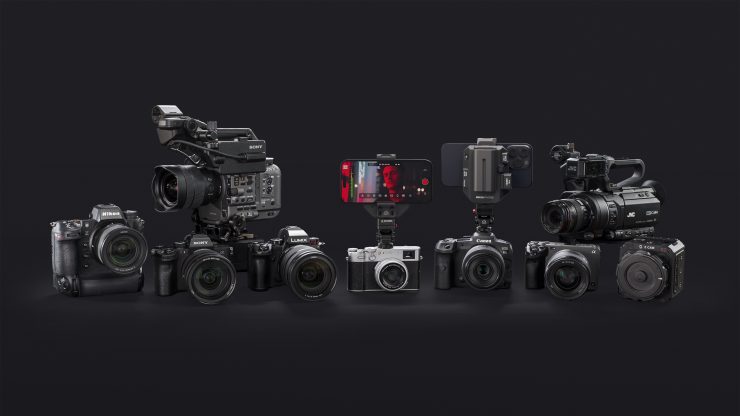
Now, there is. catch. You are limited to inputting and recording 1080p 60 / 59.94 / 50 / 30 / 29.97 / 25 / 24 / 23.98fps and 720p 60 / 59.94 / 50fps. You cannot input or record 4K material. Video can be recorded in ProRes HQ / ProRes 422 / ProRes LT / ProRes Proxy / H.265 Main 10 / H.265 8b / H.264 8b.
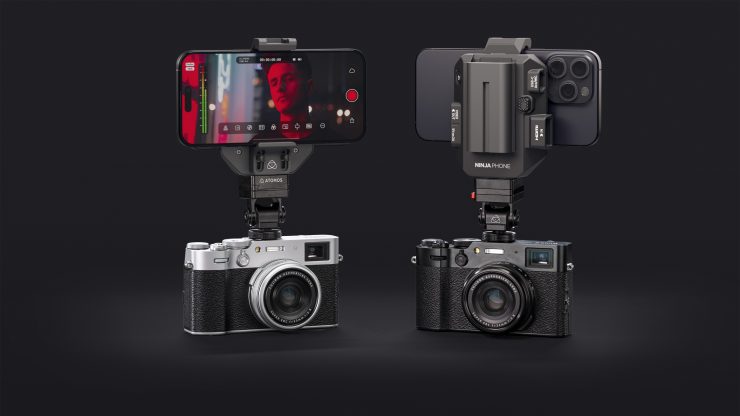
The encoded video is sent via Ninja Phone’s USB-C output to the iPhone 15 Pro or Pro Max’s USB-C port. The iPhone’s A17 system-on-a-chip decodes the camera sensor image to display on the iPhone screen. The Ninja Phone is designed on AtomIC 5, the next generation of Atomos silicon that allows for low power, silent operation while encoding 10-bit ProRes and H.265 with USB-C connectivity. It draws just 2.4W.
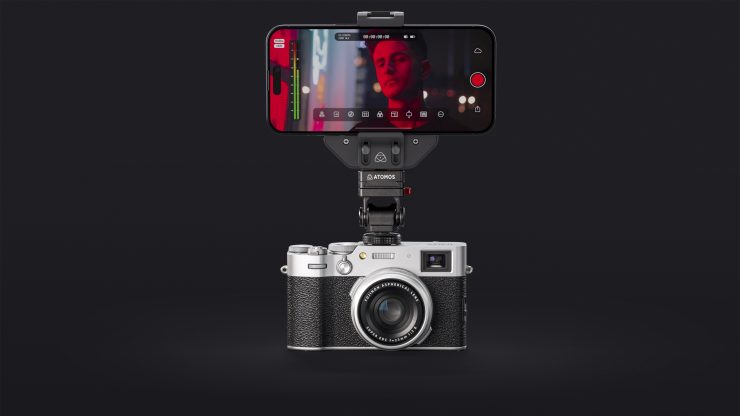
According to Atomos, the camera’s output appears on the iPhone screen with zero latency thanks to Atomos’ ProRes pipeline, encoding on the Ninja Phone and decoding via Apple’s iPhone.

The ProRes-encoded video can be stored on the phone as a .mov file and/or simultaneously transcoded by the iPhone to 10-bit H.265 for workflows like camera to cloud, or live streaming via the iPhone’s built-in 5G and Wi-Fi 6E connectivity.
The iPhone displays are very good and they are actually a lot better than most of the built-in screens that come with cameras. The latest iPhone screens have a 2,000,000:1 contrast ratio and they support Dolby Vision, HDR10, and HLG. They can also display a claimed 11 stops of dynamic range with a peak brightness of 1600 nits. Because of this, in some ways, it makes a lot of sense to utilize an iPhone as a monitoring screen for your camera.

The Ninja Phone iPhone app, downloadable from the App Store, controls the operation of both the Ninja Phone and the iPhone.
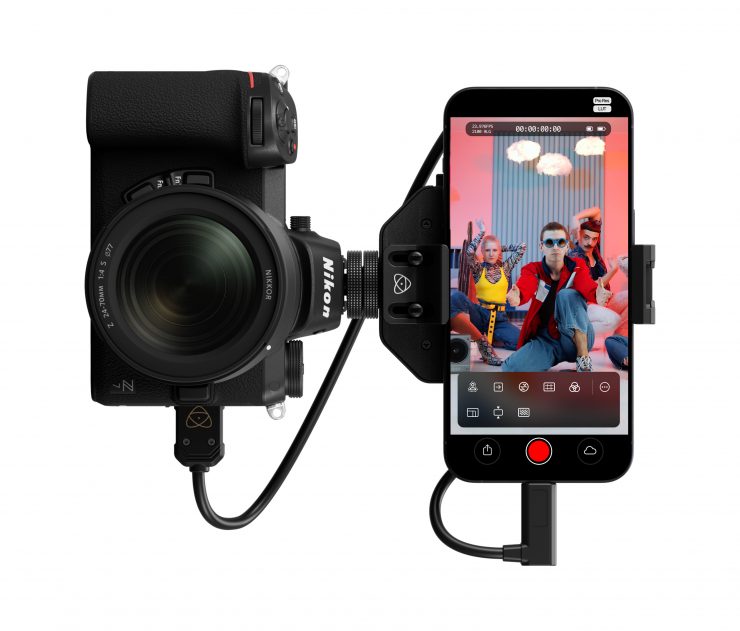
For social media creators who need to shoot in 9:16 portrait mode, the Ninja Phone app adjusts to horizontal or vertical video modes. The Ninja Phone app will run on iOS and iPadOS, and will be downloadable at the time of shipping.
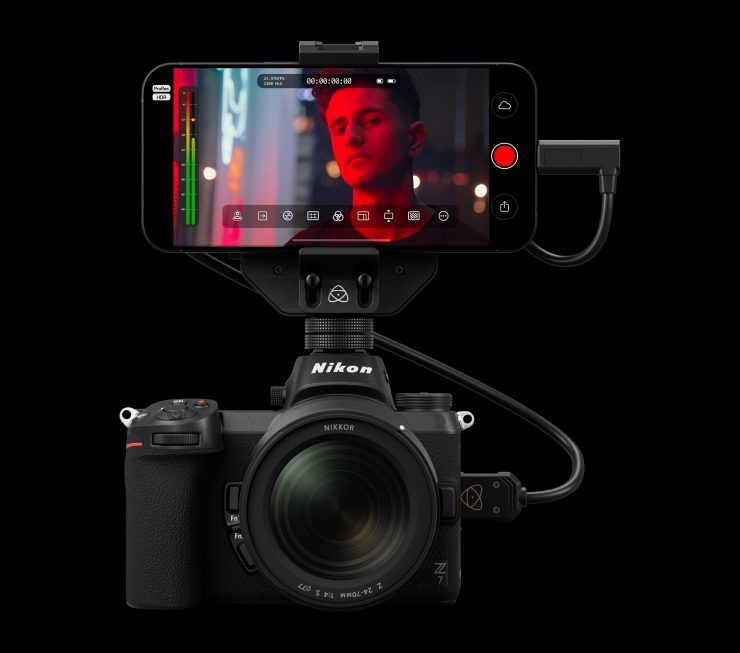
Ninja Phone weighs in at 95g, and 335g when coupled to an iPhone 15 Pro.
The Ninja Phone accommodates external iPhone accessories by integrating a separate USB-C hub to allow necessary professional add-ons like wireless USB-C microphones, for perfectly synchronizing video and audio. Third-party accessories are supported via the Ninja Phone with more added over time.
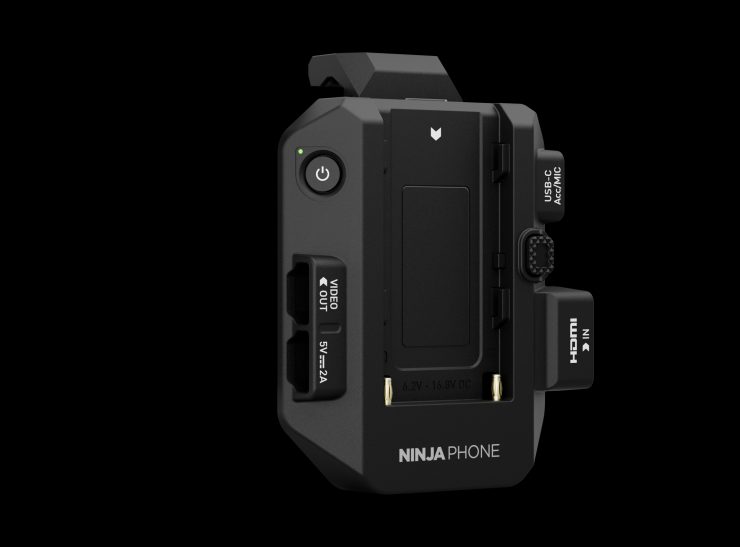
The Ninja Phone is powered by standard NP series batteries, a battery eliminator, or a USB-C 5V/3A input. The Ninja Phone charges the iPhone while in use with any of these power sources.
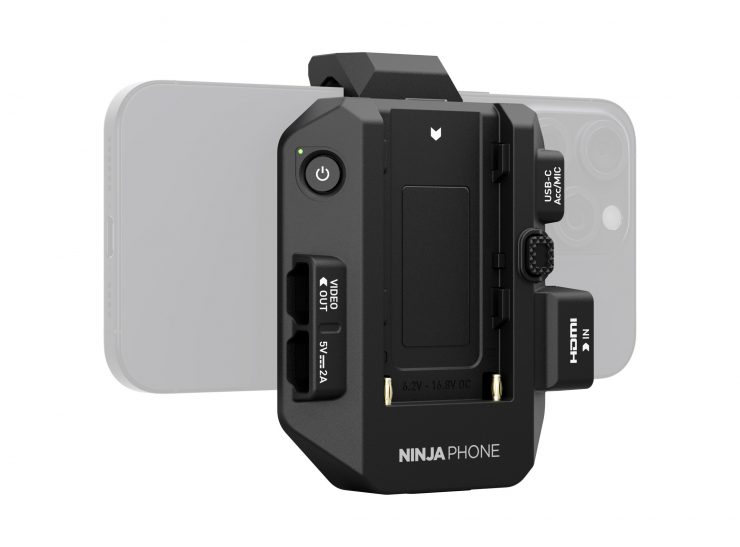
Atomos has developed a locking ecosystem for connected HDMI and USB-C cables. Atomos’ new cables for Ninja Phone lock firmly into place so there’s no chance of unwanted disconnection. You can also still use conventional, non-locking cables too. Originally, there was a slight catch, as Ninja Phone users were also going to need to purchase an additional case for iPhone 15 Pro or iPhone 15 Pro Max to ensure that the locking cable system could be used, but they have now done away with that.
The iPhone 15 Pro’s connectivity allows Ninja Phone users to make full use of Atomos’ Cloud Services (ACS). These include Camera to Cloud workflows, remote live production, and cloud editing. With ACS, content creators can publish video to social media within minutes, and filmmakers can send their footage to their postproduction team via the cloud for the fastest possible production workflow.
Price & Availability
The Ninja Phone costs $399 USD.
In summary, the Ninja Phone is an essential addition to any filmmaker’s toolkit. It combines road-tested Atomos ProRes expertise with an out-of-this-world screen, proven professional monitoring features, and built-in mobile connectivity for collaborative, remote editing.
Specifications




Thoughts
The Ninja Phone looks to be a decent offering and it makes a lot of sense to utilize an iPhone as a monitor when using certain cameras. Recording ProRes on your phone can end up taking up a lot of storage space and perhaps it would have been good to see the Ninja Phone incorporate or utilize a small removable NVMe drive instead of having to record directly to your phone. That way you would essentially almost have a modern-day Ninja Star with the added benefit of iPhone monitoring.
This isn’t the first time we have seen interfaces that allow you to use an iPhone as a monitor for your camera, although, and correct me if I am wrong, it is the first time there has been a way of recording ProRes onto an iPhone from a connected HDMI camera.
While it certainly looks like an interesting solution, having the ability to only record HD may be a deal breaker for some potential buyers.



